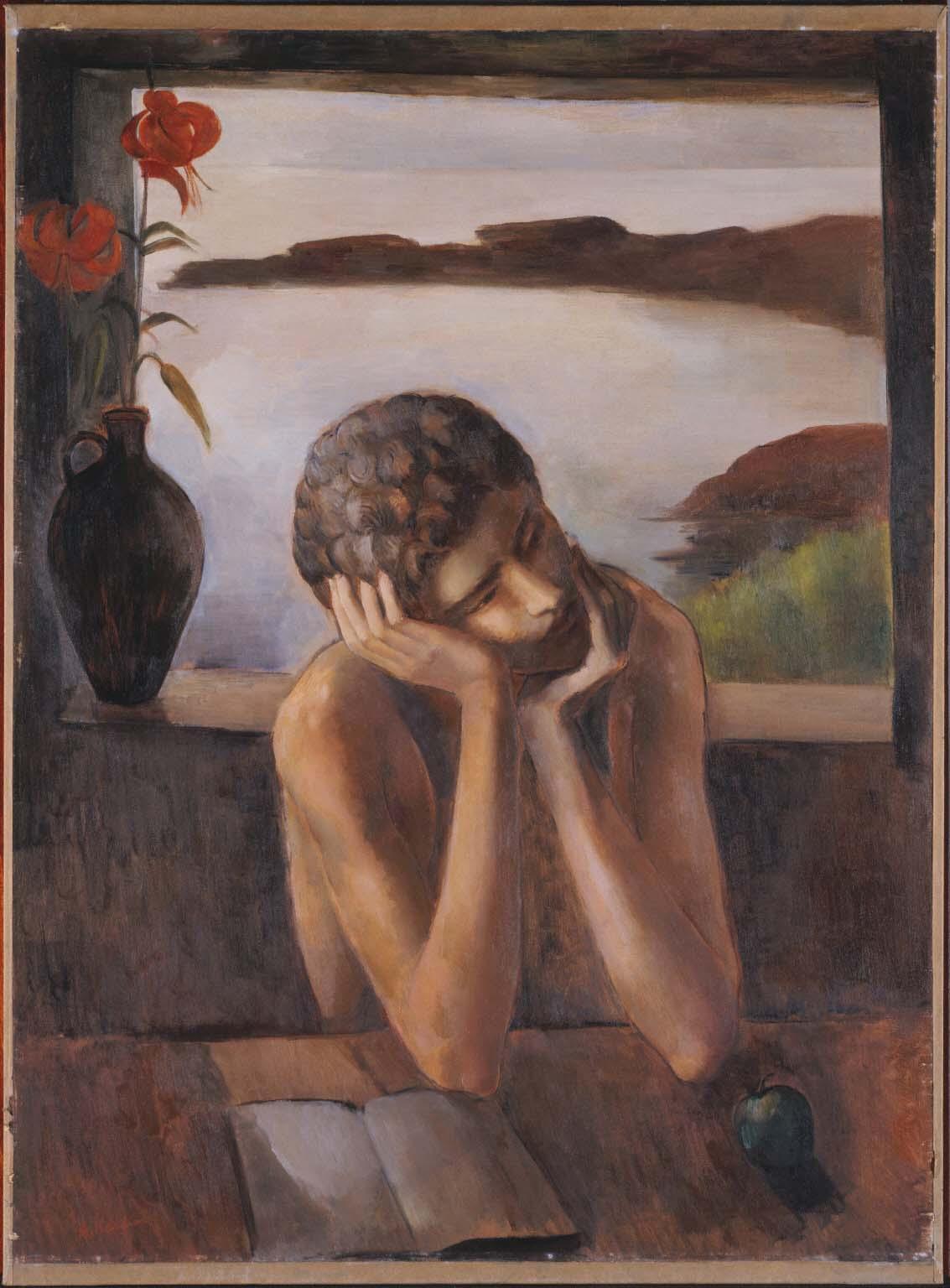Boy
Bernard Karfiol ( not dated )

Preferring seclusion, Bernard Karfiol worked slowly and allowed himself to be guided by feeling and personal emotion. Duncan Phillips, who commented on the affinity between the figures of Karfiol and those of Botticelli, Puvis de Chavannes, and ancient Greek sculpture, noted the disparity between the painter’s nature and his time: “His quiet manner, scornful of smartness, is so reserved that it is a wonder he has not been overlooked in an age addicted to sensationalism and virtuosity.”
Karfiol’s paintings are a sinuous blend of classical conservatism and modern French independence. He chose traditional subjects—portraits, nudes, and landscapes—and created well-crafted paintings that never strayed far from his sources. His interest in broken color and painterly effects was based on Impressionism and Post-Impressionism. However, he also attempted to create works of beauty that were pictorial equivalents of his moods. He claimed, “A painting should be seen through the innate feeling eye rather than literary scientific mind.”
Memorable for its dream evocation of adolescence, Boy is a portrait of Karfiol’s son, George, painted in the early 1920s in the artist’s summer home in Ogunquit, Maine. The picture is characteristic of Karfiol’s art at that time. His Ogunquit paintings convey freshness, innocence, and freedom. Life in Maine allowed him to distill his perceptions until he arrived at images that were more universal than descriptive.
The composition of Boy is reminiscent of fifteenth-century Florentine and Flemish portraits. George thoughtfully cradles his head with his hands, his elbows on a table. Gently backlit by the light streaming through the window, the figure is more strongly illuminated by an unseen source to his right. The flowers and apple add touches of rich color to the otherwise restrained palette. The blue, green, and yellow of the apple—recalling the fruit in Cézanne’s still lifes—contrasts with the earth colors and chiaroscuro elsewhere, adding dynamism and a focus in the lower part of the composition.
Karfiol may be using the painting to refer to his son’s growing maturity and awareness. George dreams with open eyes. His aspirations, symbolized by the book and the ocean seen through the window, are tempered by images associated with maturation, the flowers and fruit. This may have had personal significance to Karfiol, who was independent at an early age. Inspired by his son and at the easiness of life in Maine, he may have been nostalgic for his own youth.